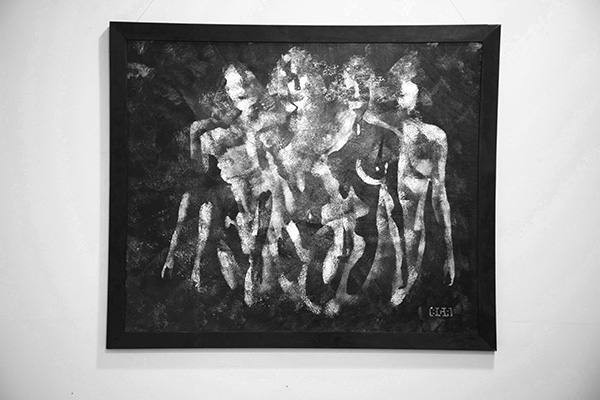Brian Alexander - Coppertone
Exhibited until 10 July 2014
Dunedin artist Brian Alexander unveils yet another solo exhibition in Dunedin at Mint Gallery this week – Coppertone. Combining influences from his original designs as well as other topics of the female form, the exhibition is comprised of 18 works, each varying in size all less than 1m x 1m, and ranging in affordable prices that sit between $150-$850 – reasonable for budding collectors.
Since 2007 Brian Alexander has been an exhibiting artist. In 2007 he was accepted into local business art exhibitions such as Edinburgh Realty’s and Hope and Son’s, as well as being accepted into various art society exhibitions. In 2012 he debuted his first solo exhibition, A New Beginning, in the Dunedin Community Gallery, before curating his own exhibition in the Port Chalmers Town Hall in 2013. This was followed by his success in the Carey’s Bay Hotel charity art auction, where he entered and sold numerous works, and most recently he has been accepted into the 2014 Christchurch Art Show.
A New Beginning seems to be the most direct influence on Coppertone in both style and subject. A New Beginning featured 31 abstract works, with motifs ranging from Maori symbolism to eclipses and coronas of the sun using acrylic paint, combining both neutral and metallic hues in textured layers. Alexander has confessed he is “interested in the thin veneer that covers society, saying: “Once you cut through that fabric, what lies behind it?” Justifying his interest in the conflict between what is, and what lies behind what is, and the relationship between nature and humanity.
Alexander has produced a series of metallic works, covering the topics of the female form, portraits, faith, relationships and original designs inspired by nature and his imagination. In Coppertone, not dissimilar to A New Beginning – Alexander has utilised the luminescent earthly tones of black, red, gold, silver and, of course, copper to achieve images with a visual impact that stimulates contemplation on what lies beyond empirical experience.
Painted on plywood, framed with raw wood that has been dyed black, the works are explicitly organic in both content and form. Moreover, the background of each painting is very similar, linking each painting to one another creating overall coherency. Murray Eskdale, curator/owner of Mint, suggested that Alexander had adopted the technique of pressing paint on plastic bags and then transferring the result onto the surface to create the background texture.
The exhibition starts with the largest painting, Mantis – which displays Alexander’s interest in layering and texturing colour using both acrylic and spray paint to create dimension and definition. Alexander creates a scene of four nude female figures painted in metallic copper as well as combining areas of blackness with negative white space to create suggestions of form – a technique applied to all of the paintings in this particular exhibition.
The figures remind me of a less angular and constructed, more blurred and textured version of Picasso’s ladies in his 1907 masterpiece “Les Desmoiselles d’Avigon.” Bar the blue areas, and I don’t think Alexander’s females are prostitutes; there is a similarly intriguing mythically and subtly sexually loaded aesthetic that reflects his interest in the female form.
The artist also includes a self-portrait in which one half of his face is painted in gold and copper tones, and the other half is completely black space that recedes back into the canvas, and is defined by the background colours – so ominous.
Other works include portraits of musicians, including Tim Finn, and other various objects and symbols including crosses, eclipses, and “cracks” – which literally show cracks in the surface of the wood, reflecting Alexander’s continual interest in what “lies behind.” The titles of the work, “Portal 2,” “Crack in the Wall” and “Into the Gap” further imply his intrigue with what is beneath the surface.
It is interesting to notice how symmetry seems to be a point of interest for Alexander, as numerous works are divided in the middle by either a line, or change in colour, or some defining visual feature which creates visual conflict on each half of the canvas. This is appropriately in dialogue with his counter-balanced subjects such as male/female – nature/religion – relationships/the self.
Alexander’s works are both stylistically and conceptually multilayered, and Alexander’s unique representations convey the tension he observes between humans and nature. Alexander’s Coppertone is interrogative, imaginative and radical, yet still remains understated and profoundly thought provoking.



